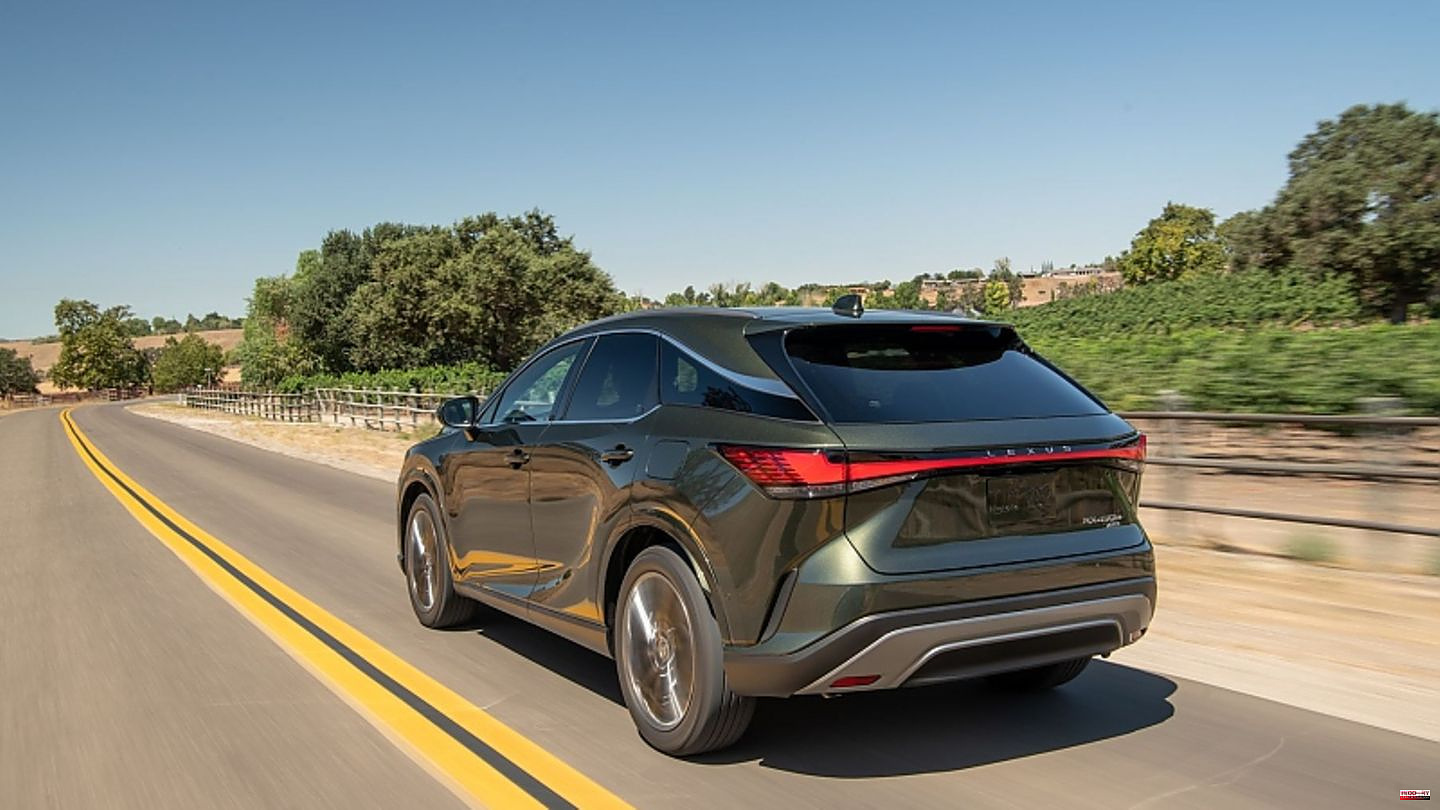Toyota was in no particular hurry with the part-time electric vehicles. The Japanese are now putting down a fairly high number of cycles for the plug-in hybrids. It started with the Toyota RAV4 plug-in hybrid, followed by the Toyota RAV4 plug-in hybrid and now comes the Lexus 450 h. What the competitors from Wolfsburg are fine with is only cheap for the Japanese: Take a basic architecture and put a different hat on it. So the three Japanese share the GA-K platform. That means an 18.1-kilowatt-hour (net) battery that promises an all-electric WLTP range of up to 65 kilometers. With us, the system reported 61 kilometers. “We handle the battery more carefully than our competitors. Because the batteries should last as long as the car,” explains Lexus technician Paul Williamsen. For example, the actual state of charge of the batteries will never fall below 20 percent.
The drive train consists of a 2.5 liter four-cylinder engine with 132 kW / 182 hp, a 136 kW / 185 hp electric motor at the front and another electric motor with 40 kW / 54 hp at the rear, resulting in a system output of 227 kW / 309 hp leads. This gives you more than enough motorisation: 100 km/h are reached in 6.5 seconds and the electronics drop anchor at 200 km/h. The Japanese engineers have done their best to drive out the CVT's dynamic-inhibiting quirks. Which also works quite well. The 2,240-kilogram crossover reacts enthusiastically to commands from the accelerator pedal, only with partial load and a hearty step on the accelerator pedal can the transmission not completely deny its origin. Anyone who is not a fan of this rubber band feeling of the CVT transmission can push the automatic lever backwards into the S position and can select six gears with the shift paddles and thus further disguise the characteristics. Purely electrically, the Lexus RX 450h is up to 130 km/h fast, which is sufficient for many driving situations and, given the battery capacity, quite helpful. However, the same cannot be said of the charging speed, which is a maximum of 6.6 kW and thus fills the batteries in around 2.5 hours. Lexus states a WLTP consumption of 1.2 l/100 km. During our test drive, we let the system take over at the push of a button. When the batteries are full, the Japanese SUV is the champion of savings. During our test drive, during which we drained the battery, we came up with an average consumption of 6.1
The automatically switchable all-wheel drive provides traction when needed, the adaptive dampers and the optional 21-inch tires breathe a portion of dynamism into the RX without throwing comfort overboard. On the contrary: the chassis makes a balanced and harmonious impression, copes with long asphalt bumps just as well as transverse joints that follow one another in quick succession. A result of the combination of a six centimeter longer wheelbase and a 4.5 centimeter wider track at the rear. Another reason is the significantly increased torsional rigidity of the body. In order to achieve this, the Japanese technicians read the engineering primer very carefully. In addition to additional cross members and struts in the rear, a seamless ring frame also helps at the rear. In addition, there are 2.6 meters longer glued joints and 7.4 meters longer weld seams compared to the current model. The high-strength foam in the area of the rear door opening is the icing on the cake. At the front, a double locking mechanism on the bonnet prevents torsion of the front end.
The infotainment, in the center of which is the 14-inch touchscreen, also comes from the smaller Lexus NX brother, which is visible at first glance. So there are significantly fewer controls, knobs and buttons in the RX than before. The symbols on the touchscreen are clear and anyone who gets involved with the logic and invests a little time will get along well. Nevertheless, the infotainment does not quite reach the appearance and functionality of the German competition. A good idea is that the head-up display shows the function of the two large controls on the left and right of the valance. The fact that the Japanese have a heart for the non-digital natives is shown by the two USB-A ports at the front, plus two USB-C variants at the front and rear and one in the console box. Lexus is also following up with the helpers. The Japanese traditionally attach great importance to security. So the assistant also monitors the opening of the doors and warns if a cyclist or other vehicle is approaching from behind.
In terms of looks, RX number five differs significantly from its predecessors. The radiator grille is even more powerful, the A-pillar has been moved further back and the wheelbase has grown by six centimeters to 2.85 meters, which is particularly pleasing to the rear passengers, as you can make yourself comfortable in the second row. The fact that the trunk volume remains unchanged at 612 liters is due to the thinner tailgate and the lower loading sill, which is also useful when loading. Finally, the question remains as to whether the fifth generation of the Lexus RX can finally shake the throne of the German premium top dogs. The chances are better than before, but experience allows the Japanese to formulate modest goals. Lexus wants to sell 12,000 RXs per year in Europe, with half of the customers coming from other manufacturers. In Germany, the Japanese SUV will be available from dealers from January.









